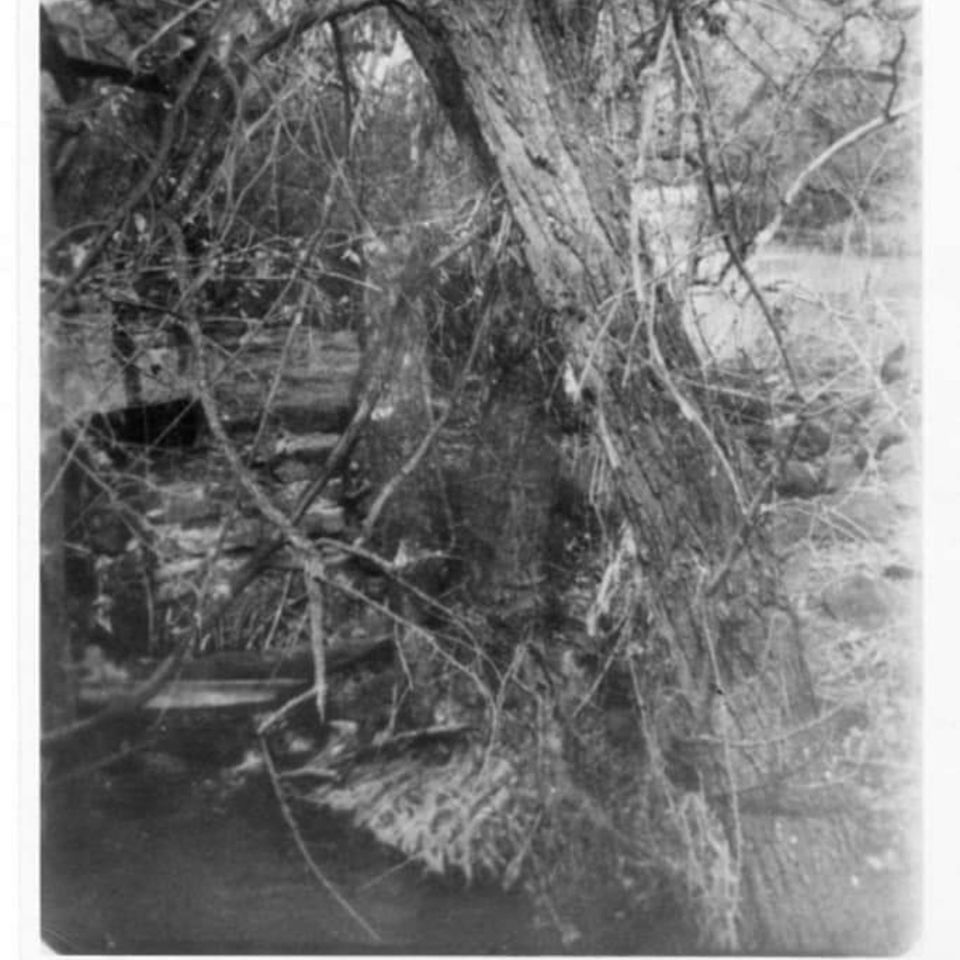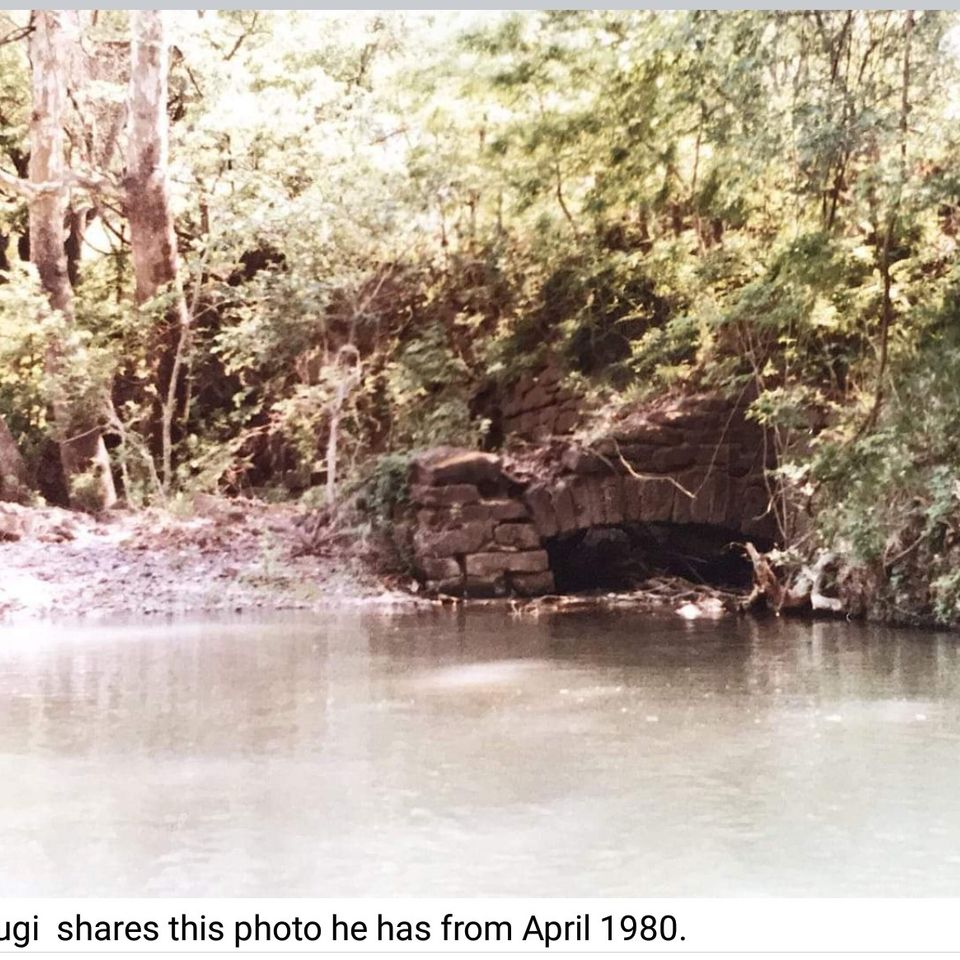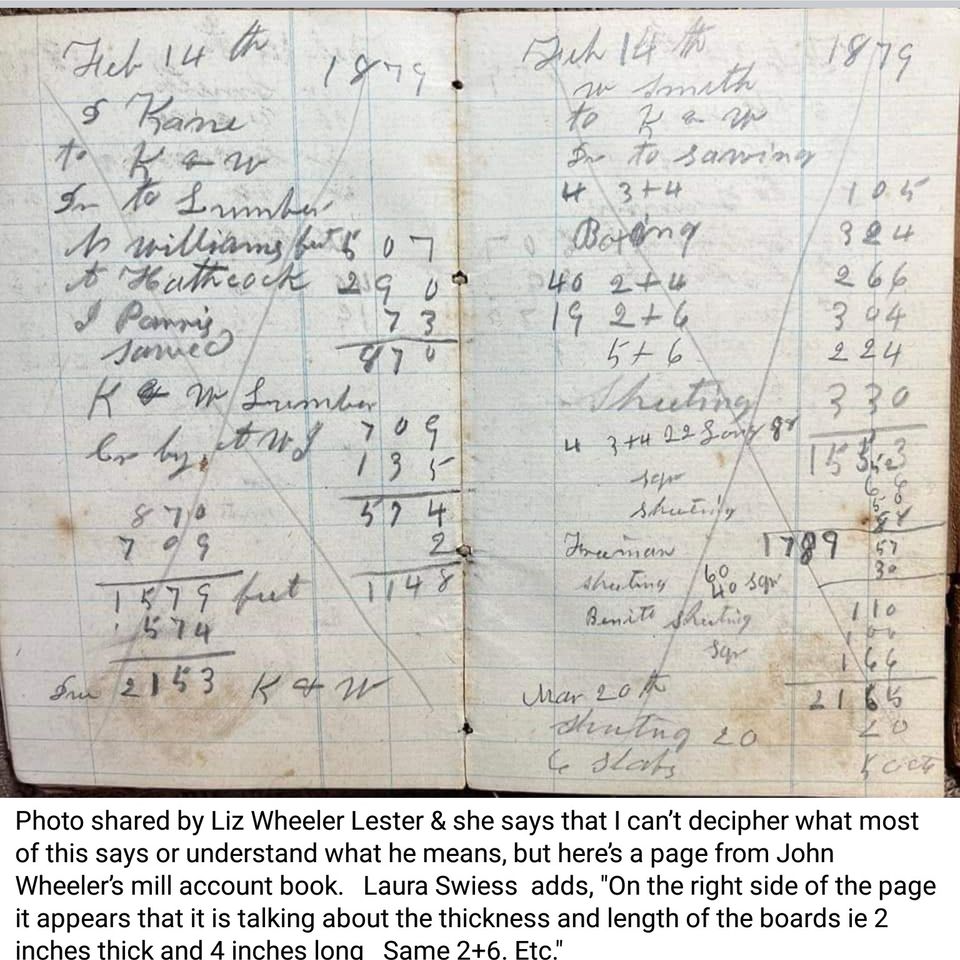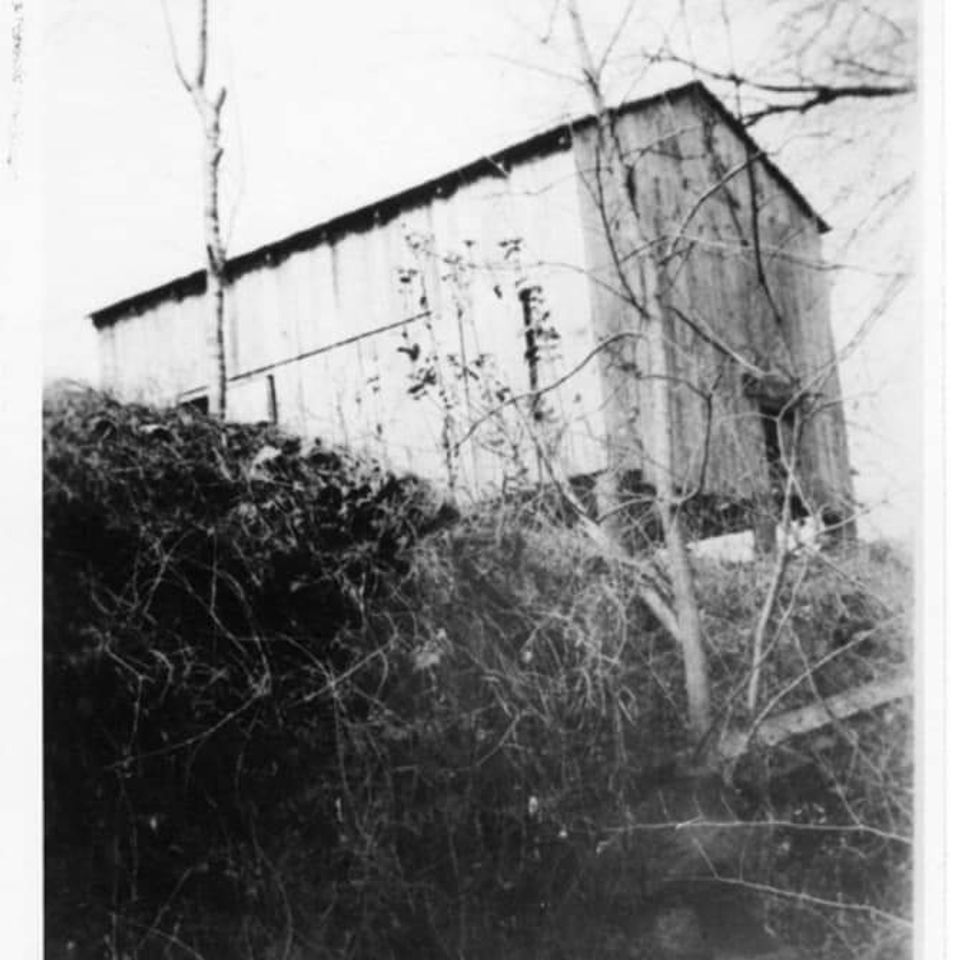by Barbara J. Wood
WHEELER
THE WHEELER'S MILL in Stockdale Texas
[The historical content of this article is based on an oral history by Mr. J.J. Chappell of Stockdale printed in the May
10, 1979 issue of the Wilson-Gonzales County News & Shopper. Written by Gene Maeckel, October 2002 Wilson County News]
The area surrounding Stockdale was first settled in the 1830's but it was not until the 1860's and 1870's that a village formed and its first industry was the Wheeler's Mill. The Wheeler's Mill was located on the Cibolo Creek southwest of the community. Its mill pond dam was built by John Wheeler sometime around 1870 and was constructed of large stones hauled by oxen teams from nearby hills.
These stones were arranged to create a barrier across the creek creating a waterfall which turned a mill wheel. The mill equipment was operated by a wide flat belt which ran from the mill wheel, downstream of the dam, to the mill equipment located in a nearby enclosure called the mill house. The roofing for the mill house was unique in that it was covered with split oak shingles made from the local native trees. The power generated by this water wheel was used for grinding corn, ginning cotton, sawing wood, or crushing sugar cane stalks. The mill pond created behind the dam also provided a great recreational area for the local folks to go fishing, swimming, and picnicking.
Initially the mill was designed as a saw mill to cut lumber from local native trees to build homes. In addition to the mill, a brick kiln was built near the mill site where bricks were created to build chimneys for the new homes. The brick making operation was conducted separately by anindividual of Hispanic heritage.
The juice collected from the crushed sugar cane stalks was cooked off at the mill site, in another separate operation, to create a syrup or molasses which was used as a sweetener for cooking rather than sugar in the family homes.
Cotton ginning ceased at this site in the early 1900's. After the major flood on the Cibolo in 1913, much of the mill house was damaged causing it to lean. A portion of the damaged
building was then torn down leaving only the grist mill and a mattress factory operation.
Today nothing remains of the old mill site except perhaps a few remaining stones. At one time an oil painting of this site was hanging in the Wilson County Library in Floresville.




